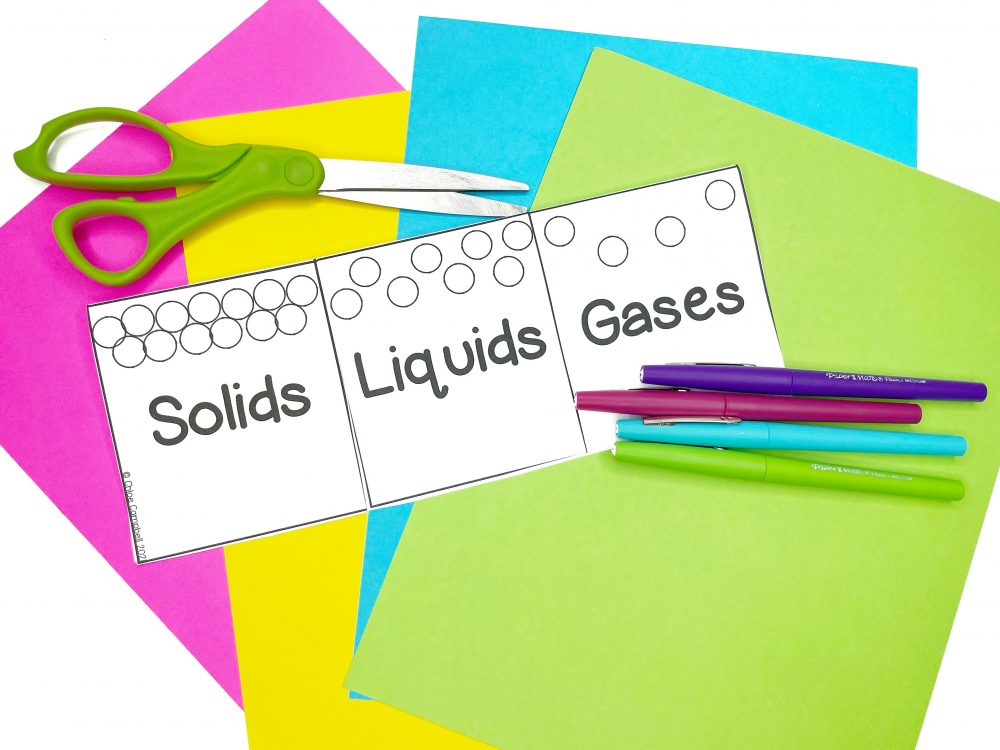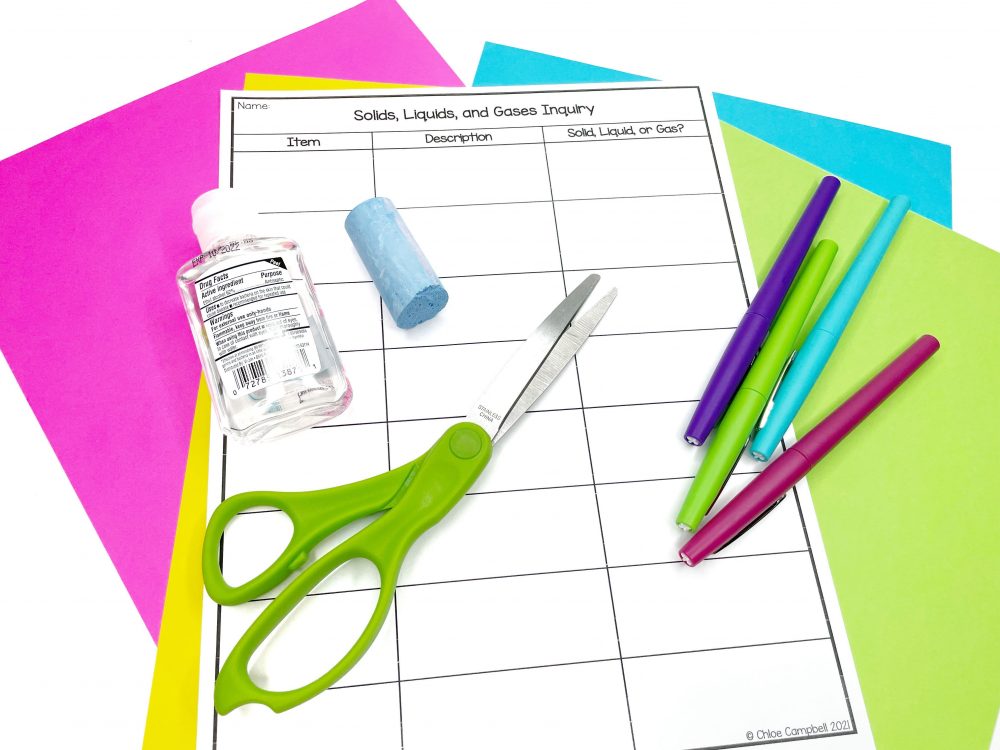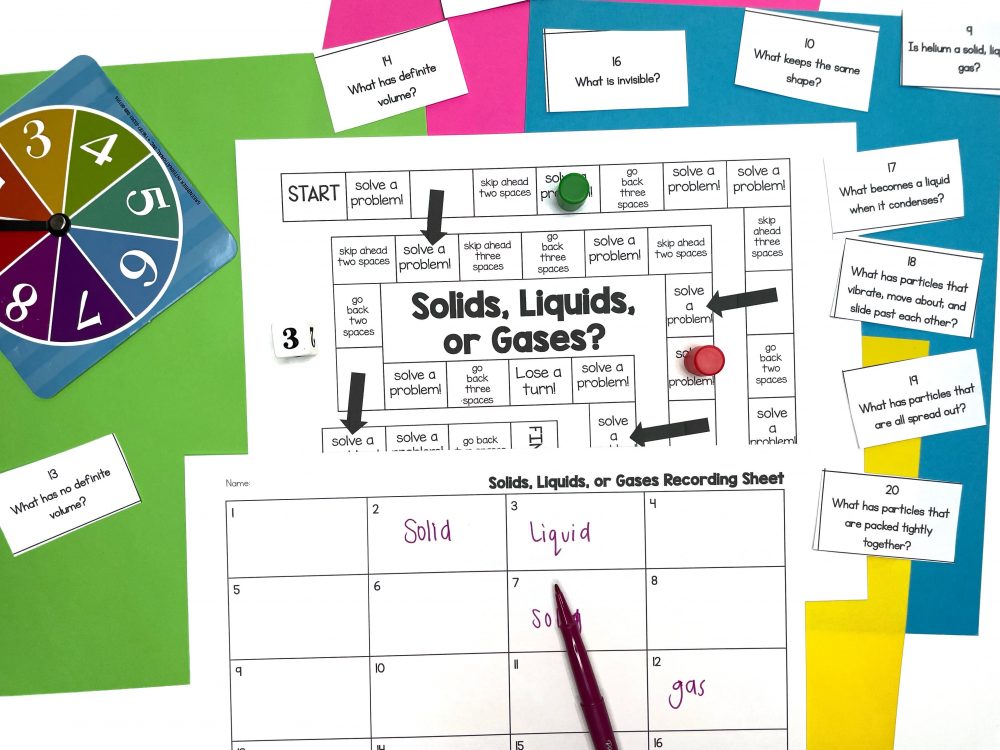Ever had an ice cream party with a bunch of 5th graders on a hot day? Let me tell you. I do not suggest it. Although you would think 5th graders could totally handle eating ice cream before it melted all over the place. You would be assuming wrong. However, it gives you a perfect opportunity to start teaching states of matter!

5 Tips For Teaching States Of Matter
It’s time to start teaching states of matter to your 5th graders; you are just unsure how you want to get started. There is so much to go over with solids, liquids, and gases. So how do you teach it all and make it exciting and fun for your students? Here are 5 tips for teaching states of matter.
#1: Read Informational Passage
When teaching states of matter, you want to ensure your students understand what the states of matter are. Using informational texts as a states of matter introduction activity will help prepare your students for the science experiments and other activities you plan on doing with the three states.
You can still make reading passages fun. This informational text packet not only includes tabs to make organizing information easier but interactive pages. Your students will use the information they learn within the reading passages to help complete the worksheets.
You may also want to use changing states of matter readings to help teach ELA skills. There is no reason you can’t bring in a little close reading and annotation during your science lessons.
Integrating science and reading is a really important concept. Nonfiction texts are often the most difficult for students to understand. Allowing them to see nonfiction in science and ELA can really benefit them. Read more about integrating science and literacy in this blog post.
#2: Teach States Of Matter Vocabulary
There is a lot of vocabulary in science, and when teaching states of matter, you want your students to know and understand all of the critical vocabulary terms. Just telling them to memorize each word will not work, though.
While teaching states of matter vocabulary, use activities like crossword puzzles, word searches, and other fun vocabulary work. Your students won’t even realize they are learning new vocabulary in the process.
#3: Interactive Notes
As teachers, we are always looking for ways to make the note-taking process a little more engaging for students. By using note-taking tools like interactive foldables, your students will be able to learn about how atoms combine to form molecules that can then transform into H2O.
You can also use mind mapping to determine what your students already know about forms of matter and what you still need to teach them. This will also help you plan which experiments for solids, liquids, and gases you will do with your kids!
#4: Do Experiment
Every kid wants to do science experiments whenever you say it is time for science. There is definitely a time and place for experiments. You don’t want to just throw random states of matter activities into your lesson plan. Make them effective and useful.
Have students look for different objects around your room and figure out if they are solid, liquid, or gas. Throw some tricky objects in the mix, like hand sanitizer or ice cubes, in a bowl!
States of matter experiments do not need to be overly complicated. Using just a few materials, you can add easy states of matter experiments to your daily science block. The concept of matter is often pretty easy to understand for students once explained through readings, vocabulary, and other engaging activities about matter.
#5: Play Around
No matter what grade level you teach or what school you teach at. Students love games. Once you have been teaching states of matter for a while, it may be time to have some fun while reviewing all the different concepts.
Adding a states of matter board game into the lesson plans is a perfect way to review. Your students can play it in small groups or with partners, and you could probably even find a fun way to play as a whole class!
Tips For Teaching States Of Matter
Teaching states of matter can be very easy, and when you plan ahead and think of exactly what you want to accomplish with each lesson, it becomes even easier. Use these tips for teaching states of matter to get started with the planning process. Remember, your students should be engaged and not just sitting there memorizing or taking notes off of a states of matter anchor chart.
Find ways to engage your students through reading passages, foldables, vocabulary activities, games, and experiments. Your students will learn more and remember more through hands-on and engaging lessons.
Looking for more science related blog posts? I’ve got you covered. Check these out:







Leave a Reply